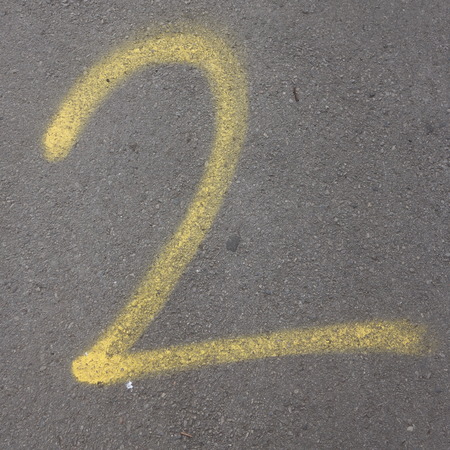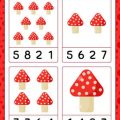1. Origins and Development of the Celtic Cross Spread
The Celtic Cross spread is one of the most well-known tarot layouts in America today, but its roots go back further than many might realize. While “Celtic” hints at ancient European origins, the actual spread as we know it was popularized in the early 20th century by influential occultists and tarot authors, especially Arthur Edward Waite, who included it in his guide for the Rider-Waite Tarot deck. This layout quickly became a staple for readers across the United States because of its structured approach and ability to provide a deep look at complex life questions.
Early Influences and Historical Roots
The term “Celtic Cross” may evoke images of medieval Ireland or mystical druids, but the evidence suggests that the spread itself is more modern. While tarot cards have been used for fortune-telling since at least the 1700s in Europe, there’s no record of this specific ten-card arrangement before the late 1800s or early 1900s. The design likely drew inspiration from both older European card-reading customs and Victorian-era fascination with mysticism and symbolism.
Key Milestones in the Spread’s Evolution
| Year/Period | Event/Influence |
|---|---|
| Late 19th Century | Mystical societies in Britain and France began experimenting with tarot layouts. |
| 1910 | A.E. Waite publishes “The Pictorial Key to the Tarot,” introducing the Celtic Cross spread as a standard method. |
| 20th Century Onward | The spread gains popularity across America through books, tarot clubs, and eventually online communities. |
Why It Became a Modern Favorite
The Celtic Cross layout appeals to American tarot readers because it offers both structure and flexibility. It uses ten cards—each with a unique position and meaning—to address not just what’s happening now, but also influences from the past, present challenges, future possibilities, and even external opinions. This comprehensive approach makes it useful for everything from personal reflection to big life decisions, which is why you’ll find it recommended in almost every American tarot guidebook today.
2. Symbolism and Meaning Behind Each Card Position
The Celtic Cross spread is one of the most iconic tarot layouts, beloved for its depth and clarity. Each card position in the spread carries a unique meaning, contributing to a rich story that unfolds with every reading. Let’s break down what each spot in the Celtic Cross represents and how these meanings have been interpreted over time.
The Ten Positions of the Celtic Cross Spread
| Position | Name | Symbolism & Meaning |
|---|---|---|
| 1 | The Present (Significator) | This card sits at the center and reflects your current situation or main concern. It sets the tone for the reading and grounds everything in your present reality. |
| 2 | The Challenge (Crossing Card) | Placed across the first card, this spot reveals obstacles or forces working against you. It highlights what stands in your way or complicates matters. |
| 3 | The Foundation (Below) | This position uncovers the root cause of your issue—the underlying influence or motivation that has brought you to where you are now. |
| 4 | The Recent Past (Left) | This card shows recent events or experiences that are still impacting your current situation, offering insight into how past actions shape today’s circumstances. |
| 5 | The Goal/Crowning Card (Above) | Located above the center, this card represents your aspirations, ideals, or what you’re hoping to achieve. It’s often seen as the “best possible outcome” if things go well. |
| 6 | The Near Future (Right) | This spot hints at upcoming influences or events that will soon enter your life, suggesting where things are heading in the short term. |
| 7 | Your Attitude (Self) | This card describes your personal feelings, mindset, or approach to the situation. It reflects how you’re handling things internally. |
| 8 | The Environment (External Influences) | This position sheds light on people, energies, or situations around you that may be affecting your journey—sometimes supportive, sometimes challenging. |
| 9 | Your Hopes and Fears | This card explores your inner wishes and anxieties. It’s about what you secretly desire or dread regarding the outcome. |
| 10 | The Outcome | Sitting at the end of the spread, this card predicts where things are likely headed if current trends continue—a glimpse into the future based on all previous influences. |
Interpreting Symbolism Over Time
The traditional meanings of each Celtic Cross position have roots in early 20th-century tarot practices but have evolved with modern readers. In American tarot culture today, readers often adapt these positions to fit everyday issues—from relationships to career decisions—while honoring their symbolic origins. The cross-and-staff layout itself echoes ancient symbols of balance and crossroads, making it especially powerful for exploring choices and directions in life.
Quick Reference: The Flow of a Reading
- Center Cross (Positions 1-6): Covers your core issue and immediate influences—a snapshot of your here-and-now.
- Vertical Staff (Positions 7-10): Dives deeper into personal attitudes, external factors, hopes/fears, and long-term outcomes—offering layers of context for interpretation.
How Modern Readers Use These Meanings Today
For many Americans exploring tarot, understanding what each card position means helps turn a simple reading into a conversation about life’s twists and turns. Whether you’re seeking clarity on love, work, or personal growth, knowing the symbolism behind each spot in the Celtic Cross can make readings more meaningful—and much easier to relate to your own experiences.
![]()
3. Preparing for a Celtic Cross Reading
Setting the Stage for Insightful Tarot Readings
The Celtic Cross spread is one of the most beloved tarot layouts in America, and preparing for a reading can be just as important as the cards themselves. Getting ready isn’t only about shuffling your deck—it’s about creating a mindful space where you can really focus on your questions and open yourself to guidance. Here are some culturally relevant tips to help you set the scene for your own Celtic Cross reading.
Selecting Your Tarot Deck
Your choice of tarot deck can influence the energy of your reading. Many American readers love classic decks like the Rider-Waite-Smith, but there are plenty of modern options featuring diverse artwork or themes that resonate with different backgrounds and personal tastes. Choose a deck that feels right for you—one that reflects your personality, culture, or spiritual leanings.
| Deck Style | Popular Examples | Why Choose It? |
|---|---|---|
| Classic | Rider-Waite-Smith | Easy to learn, widely recognized symbols |
| Modern/Inclusive | The Modern Witch Tarot, The Wild Unknown | Diverse representation, fresh imagery |
| Cultural/Heritage-Based | The New Orleans Voodoo Tarot, Native American Tarot | Connects with specific traditions or identities |
Creating the Right Atmosphere
In American homes, it’s common to set the mood for tarot by dimming the lights, lighting candles, or playing soft background music. Some people like to burn incense or use essential oils such as lavender or sage to clear the air and invite positive vibes. You might also want to lay out a special cloth or mat for your cards—this not only protects them but gives your session a sacred feel.
- Candles: Symbolize illumination and focus.
- Sage/Palo Santo: Used for cleansing and clearing energy.
- Crystals: Amethyst, quartz, or obsidian are popular choices for clarity and protection.
- Music: Gentle instrumentals or nature sounds help create a calming environment.
Centering Yourself Before You Begin
A calm mind leads to clearer readings. In the U.S., many people use short meditations or breathing exercises before laying out their cards. Try this simple routine:
- Sit comfortably and close your eyes.
- Breathe in slowly through your nose for four counts.
- Hold your breath for four counts.
- Breathe out through your mouth for six counts.
- Repeat three times while focusing on your question.
This helps you let go of distractions and tune into your intuition—an essential step before working with the Celtic Cross spread.
Your Personalized Preparation Checklist
| Step | Description |
|---|---|
| Select Your Deck | Pick a tarot deck that feels meaningful to you. |
| Create Atmosphere | Add candles, incense, music, or crystals to set the mood. |
| Clear Your Mind | Meditate or breathe deeply to focus on your intention. |
| Laying Out Tools | Have your deck, cloth, journal, and pen ready. |
| State Your Question Clearly | Phrasing matters—think about what you truly want insight on. |
Taking these steps makes every Celtic Cross reading more meaningful and personalized—helping you get honest guidance whether you’re reading for yourself or others.
4. Step-by-Step Guide to Performing the Celtic Cross Spread
The Celtic Cross spread is one of the most popular tarot layouts in the United States, beloved for its ability to give a detailed snapshot of almost any situation. Whether you’re brand new to tarot or have been reading cards for years, this guide will walk you through each step in a way that’s easy to follow and practical for modern readers.
Getting Ready: What You Need
- A tarot deck (any style works, but Rider-Waite-Smith is the most common for this spread)
- A quiet space where you can focus without distractions
- Your question or area of concern
Laying Out the Celtic Cross
Place the cards in this specific order:
| Card Number | Position Name | Meaning/Focus |
|---|---|---|
| 1 | The Present / The Heart of the Matter | Your current situation or main issue at hand |
| 2 | The Challenge / The Crossing Card | An obstacle or opposing energy affecting your situation |
| 3 | The Foundation / The Root Cause | The underlying reason or root of your concern |
| 4 | The Recent Past / What’s Behind You | Past influences now fading away or recently ended events |
| 5 | The Possible Outcome / Crowning Card | Your potential or best outcome if things stay on course |
| 6 | The Near Future / What’s Ahead | What’s likely coming next or immediate developments |
| 7 | You / Your Approach | Your attitude, role, or actions regarding this matter |
| 8 | The Environment / External Influences | People, energies, or circumstances surrounding you right now |
| 9 | Your Hopes & Fears | Your anxieties and aspirations about the outcome |
| 10 | The Final Outcome | The likely result if things continue as they are |
How to Lay Out the Cards (Visual Reference)
- Card 1: Center position.
- Card 2: Place sideways across Card 1.
- Card 3: Below Cards 1 and 2 (foundation).
- Card 4: To the left of center (past).
- Card 5: Above center (potential outcome).
- Card 6: To the right of center (near future).
The remaining four cards form a vertical line to the right of the cross:
- Card 7: Bottom of the line (you).
- Card 8: Above Card 7 (environment).
- Card 9: Above Card 8 (hopes/fears).
- Card 10: Top of the line (final outcome).
Tips for Reading Each Position Effectively
- Treat each card as a piece of a bigger story—notice how they interact with each other.
- If you’re new, take your time describing what you see before reaching for a guidebook meaning.
- If you get stuck, focus on your first gut reactions; intuition plays a big part in American tarot culture!
A Quick Example Interpretation
If you pull The Lovers as Card 1 and The Tower as Card 2, it could suggest a central theme around relationships facing sudden change. Use each card’s position to help tell the story: Are these changes rooted in old patterns? Is there an opportunity for growth?
Your Personalized Reading Experience
No matter your skill level, remember that every Celtic Cross reading is unique. The layout gives structure while still allowing plenty of room for personal insight and creativity—just like most things in American spiritual life!
5. Interpreting the Spread: Advice for Modern Readers
Making Sense of the Celtic Cross Spread
The Celtic Cross spread is one of the most beloved tarot layouts in the United States, and for good reason—it’s detailed, versatile, and adaptable to nearly any life question. For modern readers, especially those new to tarot or looking to bring fresh insight into their readings, understanding how to interpret this spread in a practical way is key. Here are some best practices to help you connect the symbolism of each card with real-life situations you face every day.
Breaking Down Each Position
First, let’s revisit what each position in the Celtic Cross represents and how you might relate it to typical American life scenarios:
| Position | What It Represents | Modern Life Example |
|---|---|---|
| 1. The Present | Your current situation or mindset | Your job status, family dynamic, or emotional state right now |
| 2. The Challenge | Main obstacle or issue at hand | Work stress, relationship tension, financial concerns |
| 3. The Past | Influences from your recent past | A recent breakup, career change, or move across states |
| 4. The Future | Near-term developments | An upcoming interview, family event, or new project at work |
| 5. Above/Conscious Goal | Your hopes, goals, or focus area | A promotion, home purchase, better health habits |
| 6. Below/Subconscious Influence | Your underlying feelings or beliefs shaping the situation | Self-doubt about being “good enough,” fear of change |
| 7. Advice/Self-Image | Your self-perception or recommended action | Pushing yourself out of your comfort zone, seeking therapy, learning a new skill online |
| 8. External Influences/Others’ Views | How others impact your situation or see you | Family expectations, workplace culture, friend group opinions |
| 9. Hopes & Fears | Your anxieties and aspirations | Nervousness about starting over but hoping for success |
| 10. Outcome | The likely result if things stay as they are | A new job offer, improved relationships, feeling more confident |
Synthesizing the Story: Making Connections That Matter
The magic of the Celtic Cross comes when you look at how all the cards interact—not just individually but as a whole picture. Here’s how you can synthesize your reading for clear insights:
- Look for Patterns: Are there repeating suits (like lots of Cups for emotions) or numbers? This can point to themes like emotional growth or big changes ahead.
- Notice Contrasts: If your “Present” card is positive but your “Challenge” card is negative (or vice versa), explore what’s holding you back or pushing you forward.
- Tie Cards to Real Issues: Use examples from your daily life—think about work meetings, tough conversations with loved ones, or decisions about school—to make each card feel relatable.
Troubleshooting Common Questions
If you get stuck interpreting a card or position, ask yourself these guiding questions:
- Does this card remind me of anyone in my life?
- If this card described a recent event at work/home/school, what would it be?
- What advice would I give a friend who pulled this card in this position?
Applying Your Reading to Everyday American Life
The real power of the Celtic Cross spread is using its wisdom to take practical steps forward. Whether you’re facing job decisions in a competitive market, navigating friendships across distances, or juggling family commitments and self-care—let each card offer a perspective shift or action step you can try today.
- If the outcome isn’t what you hoped for? Use the “Advice” position as your next move.
- If external influences seem strong? Focus on boundaries and self-advocacy.
No matter where you are on your tarot journey—from curious beginner to experienced reader—the Celtic Cross remains a trusted guide for making sense of modern American life and finding clarity amid everyday challenges.


